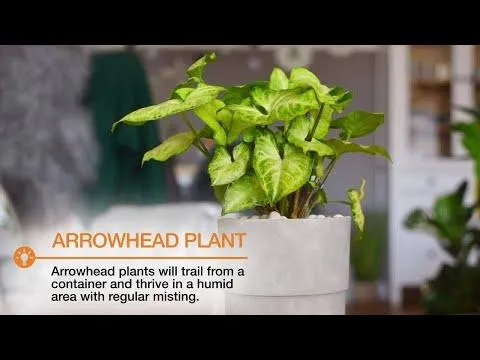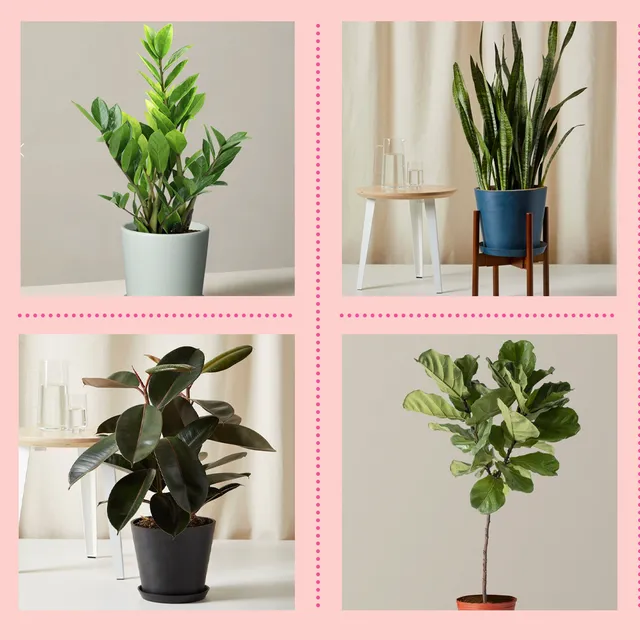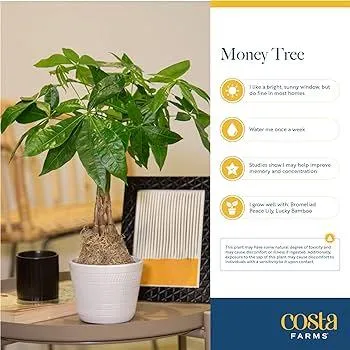Everything You Need to Know About Growing Easy Indoor Trees
If you’re looking for greenery to freshen up your home but don’t have a yard, indoor trees are a great low-maintenance option. There are several varieties that thrive with little sunlight and care. In this article, I’ll cover all the basics of selecting, caring for, and propagating easy indoor trees.
Choosing the Right Tree for Your Space
The first step is assessing your space and conditions. Indoor trees need access to sufficient—though not direct—light. Most do best near an east-, west-, or south-facing window. You’ll also want to consider the mature size. Some good small space options include:
- Jade plant: This hardy succulent can live for decades with just weekly watering. It tops out around 3 feet tall.
- Dwarf date palm: With a maximum height of 6 feet, this palm thrives in low to medium light. It has glossy green fronds perfect for small rooms.
- Chinese evergreen: With beautiful variegated leaves, this tree-like perennial grows slowly to around 4 feet. It tolerates low light well.
Larger rooms open to trees like ficuses, dracaenas, and parlour palms—all of which can reach 6 to 10 feet tall, depending on the variety. No matter the type, aim for a tree with a full, bushy shape rather than one leggy from lack of light.
Caring for Your Indoor Tree
Proper care is key once you’ve selected a tree. The basics include:

- Watering: Only water when the top inch of soil is dry. Underwatering is safer than overwatering, which causes root rot.
- Fertilizing: Use a diluted liquid houseplant fertilizer every 4-6 weeks in the growing season. Avoid fertilizing dormant plants in winter.
- Repotting: Repot into a container just one size larger when roots emerge from the drainage holes. Plants in too-small pots decline quickly.
- Pruning: Trim off diseased or damaged leaves and branches to promote healthy growth. Shape trees and keep them bushy.
- Pest prevention: Isolate new plants for a month to check for pests. Treat with insecticide if needed and remove affected leaves.
Following these guidelines ensures your tree thrives for years. The key is observing your plant and adjusting care based on how it responds.
Propagating Your Indoor Tree Collection
Many indoor trees can also be propagated from cuttings to grow new plants at no cost. Here are the basic steps:
- Take 4-6 inch stem cuttings from the mother plant in late winter or early spring, removing leaves from the bottom half.
- Dip the cut end in rooting hormone powder to promote root growth.
- Plant the cuttings about 1/2 inch deep in a pot of sterile seed starting mix or perlite.
- Mist the soil daily and place the pot in a plastic bag to maintain high humidity. Close the bag without sealing.
- New roots should form within 4-6 weeks. Pot up rooted cuttings when a good root system develops.
Many indoor trees are essentially shrubs when grown outside in warmer zones. With just a little care, you’ll be able to create a mini indoor forest!
Common Problems and Solutions
No plant is problem-free, but issues can often be avoided or remedied. Here are a few potential concerns and what to do:

- Leaf drop: This usually signals overwatering. Improve drainage and allow the soil to dry fully between waterings.
- Yellowing foliage: It may need fertilizer. Feed with a balanced houseplant formula per label instructions.
- Brown leaf tips: A sign of dry air. Try a pebble tray or humidifier to raise the humidity around the plant.
- Sparse growth: It may not be getting enough light. Rotate plants weekly for even exposure or move to a brighter spot.
- Pests: Isolate affected plants and spot treat with insecticidal soap or neem oil. Check for pests on new purchases too.
With some debugging, you can remedy most issues yourself. Always remove affected leaves and prune off damaged areas to support the plant’s health. Reach out to experts if problems persist despite your efforts.
Frequently Asked Questions
Here are answers to other common questions beginner indoor tree growers may have:
- How long do they live? With proper care, most trees can live 5-10+ years indoors depending on variety and growing conditions.
- How often do I repot? Typically every 1-3 years, when new root growth is evident from the drainage holes. Use a well-draining soil formulated for houseplants.
- Can I grow from seeds? Some varieties like figs and citrus may be started from seeds, but cuttings are generally easier for indoor conditions.
- Do they stay small? They’ll reach their mature size regardless of indoor or outdoor growth. Dwarf varieties stay compact while standards attain typical heights.
- When do I fertilize? Feed with a diluted liquid fertilizer every 4-6 weeks during spring through fall when actively growing.
With trial and error, you’ll learn each tree’s individual needs. Be patient, as it takes time to train a professional eye. But growing indoor trees is definitely possible for beginners too!
I hope this guide has covered everything you need to know to start your collection. Feel free to reach out if you have any other questions down the road. With the right species and care, your green friends will bring you joy for years to come.

Indoor Trees for Easy Care
| Tree Name | Water Needs | Light Preference | Height | Care Notes |
|---|---|---|---|---|
| Chinese Evergreen | Moderate | Low Light | 2-6 feet | Tolerates low light, prune to shape |
| Ponytail Palm | Allow to dry slightly | Low Light | 2-4 feet | Tolerance for neglect, drought tolerant |
| Zanzibar Gem | Moderate | Low to Bright Light | 3-6 feet | Toxic to pets, growth regulates with light |
| Bamboo Palm | Moderate | Bright Light | 3-6 feet | Tolerates low humidity, prune yellow fronds |
| Rubber Plant | Allow to partially dry | Low to Medium Light | 3-6 feet | Toxic to pets, tolerant of neglect |
FAQ
-
What kind of trees are good for indoors?
Basically, there are a few trees that tend to do well inside homes and apartments. Plants like bamboo palm, Chinese evergreen, and snake plant can survive with not a lot of sunlight. Other good options include dwarf date palm, ficus, and certain kinds of dracaena.
-
How much light do indoor trees need?
Most indoor trees need at least some direct sunlight every day to stay healthy. However, perhaps a south or west-facing window is not always an option. Trees like pothos and philodendron can get by with quite minimal light. On the other hand, plants similar to ficuses need fairly bright indirect light for several hours daily.
-
Do indoor trees need fertilizer?
While indoor trees will grow without fertilizer, using a balanced houseplant formula occasionally can boost their growth rate and keep them thriving for longer. You’ll want to fertilize during the growing season in spring and summer. Does your ficus look a little scraggly lately? Fertilizing might astonishingly spruce it right up.
-
How often do indoor trees need water?
The frequency of watering indoor trees depends on their type and the surrounding conditions. A good rule of thumb is to check the soil moisture by sticking your finger an inch or two down – water when the top inch or so becomes dry. During the week, you might marvel at how fast some thirstier trees like dieffenbachia gulp down water despite being potted indoors!

-
Are indoor trees difficult to care for?
Provided they are given the suitable requirements for light, water, and temperature, many houseplants can thrive indoors with hardly any fuss. However, others inclined to be more delicate or tricky. Trees in the ficus or dracaena family, for example, may need extra attention. But does perfect care really matter that much in the end? As long as you try your best, most trees will be fairly leniant and forgiving.
-
What indoor trees are toxic to pets?
If you have curious cats or dogs in your home, it’s wise to carefully research any plant you bring in. Many trees and shrubs can be poisonous if ingested by pets. Some of the most toxic varieties include English ivy, philodendron, aloe, and peace lilies. I wonder, do indoor plants really pose that huge of a threat when kept out of reach? Either way, better safe than sorry where animal safety involves.
In conclusion, quite a selection of trees can thrive as indoor plants with just the right growing conditions. Do your homework to pick ones matching your climate, sunlight, and maintenance capabilities. With a little TLC, even non-experts can grow stunning greenery indoors to bring nature inside. What tree might you add to liven up your space?
